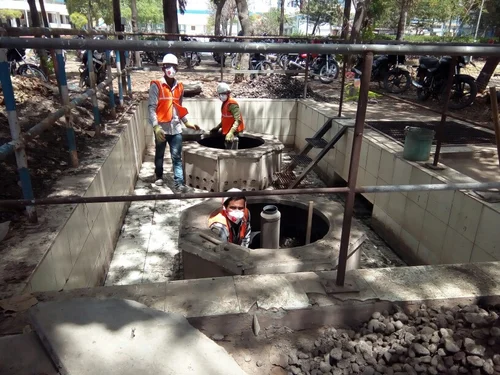
Rainwater harvesting is a sustainable way to conserve water, especially in regions facing water scarcity. A key component of this system is the rainwater storage tank, which holds the collected rainwater for future use. To ensure that the water remains clean and safe, it’s essential to properly maintain the storage tank. Here are five must-know tips for maintaining your rainwater storage tank effectively:
1. Regularly Clean the Gutters and Downpipes
The first step in ensuring clean water is keeping the collection system, such as gutters and downpipes, free from debris. Leaves, twigs, dirt, and other materials can clog gutters and downpipes, preventing rainwater from flowing smoothly into the tank. If water is blocked or diverted, it can overflow, causing water waste or contamination.
To avoid this, clean your gutters and downpipes at least twice a year—more often during the monsoon season when rainfall is heavier. Ensure that all debris is removed and that the downpipes are clear. Installing leaf guards can help minimize debris buildup and reduce cleaning frequency.
2. Use a First-Flush Diverter
One of the most important aspects of maintaining clean water in your storage tank is preventing contaminants from the roof from entering the tank. The first rain after a dry spell typically washes off dust, leaves, and other debris accumulated on the roof. A first-flush diverter is a device that directs the initial flow of water away from the tank, ensuring that only the cleaner water enters the storage tank.
Installing a first-flush diverter is a simple and effective way to keep the stored rainwater free from impurities and debris, improving the water quality for all uses.
3. Install Effective Filtration Systems
Even with clean gutters and a first-flush diverter, rainwater can still contain small particles or microorganisms that make it unsafe for certain uses. To maintain the water’s quality, it’s essential to have a good filtration system in place.
Basic mesh filters can help remove large particles, while finer filters can capture smaller debris. For those using harvested rainwater for drinking or cooking, an advanced filtration system such as UV purifiers, carbon filters, or reverse osmosis may be necessary to ensure the water is safe for consumption. Regularly check and replace filters as needed to maintain efficiency.
4. Inspect and Clean the Storage Tank Regularly
The storage tank is where the harvested rainwater is held, making it crucial to keep it in good condition. Over time, sediments, algae, or dirt can accumulate inside the tank, especially if it’s exposed to sunlight or is not properly sealed. To ensure the water remains clean, inspect the tank periodically for cracks, leaks, or signs of contamination.
Clean the inside of the tank at least once a year to remove any buildup. If the tank has an access hatch, you can use a long-handled brush or a hose to scrub off dirt and algae. For tanks with built-in cleaning ports, simply flush out the tank with clean water. If you notice mold or algae growth, you may need to disinfect the tank using mild, non-toxic cleaning agents or a diluted bleach solution.
5. Seal the Tank and Prevent Contamination
Contamination can occur when external elements such as insects, animals, or dust particles enter the storage tank. To prevent this, ensure the tank is properly sealed with secure lids and vents. The tank should also be placed in a shaded area to prevent algae growth, which thrives in warm, sunny conditions.
Ensure that the tank’s lid is tightly closed and that all pipes, inlets, and outlets are sealed to avoid any contamination. Regularly check for leaks or cracks in the tank and repair them immediately to keep the water safe and uncontaminated.
Conclusion
Maintaining a rainwater storage tank is essential to ensure that the collected water remains clean, safe, and useful for various household needs. By following these five must-know tips cleaning the gutters, using a first-flush diverter, installing filtration systems, inspecting and cleaning the tank regularly, and sealing the tank. you can ensure that your rainwater harvesting system works efficiently and provides clean water year-round. Regular maintenance will not only extend the life of your tank but also contribute to better water quality and more sustainable water usage in your home.


